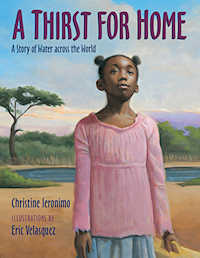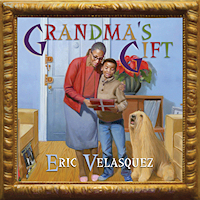One of the greatest challenges for a reluctant reader is being able to become engaged in the story. When the reluctant reader cannot identify with a story or cannot relate to its characters, they quickly disengage. While a child may not show a natural interest in reading, this does not mean that he cannot become a skilled and even enthusiastic reader in the future.
 As a former reluctant reader and member of reading Group C Grades 1 through 4, I suffered from this problem. Born to Spanish-speaking parents, I began speaking English after the age of four and as a result had a tough time in school. Back then, if teachers didn’t understand why you were not reading you were simply placed in Group C.
As a former reluctant reader and member of reading Group C Grades 1 through 4, I suffered from this problem. Born to Spanish-speaking parents, I began speaking English after the age of four and as a result had a tough time in school. Back then, if teachers didn’t understand why you were not reading you were simply placed in Group C.
Actually, it was not as bad as you may think. I would look forward to reading time. Once the class would break up into our assigned reading groups I would spend my reading time drawing. Mostly I would draw and fantasize about stories I would rather be reading, stories with action and adventure, stories featuring characters that looked like me.
Most of us were quite content in Group C because as long as we were not disruptive to those wonderful students of Groups A and B, we could do pretty much anything except talk to one another. Some Group C students would just sit and stare at the images in the books, while some would play hangman with each other, and I would draw.
Sometimes the teacher would help and encourage us to read, but far too often they would be distracted by the more glamorous challenge of assisting an advanced reader in Group A or B. Just as the teacher would begin to get deeply involved with us in Group C, a cry from Group A or B would ring out, “Teacher, I need help,” and off she went, never to return.
Most of the members of Group C were African American newly from the south and Latinos newly from Latin America. And then there was me, of course.
Why was I a reluctant reader? It would take me 30 years to answer that question.
One of the problems was the reading material. Consistently
not seeing myself represented in the reading material was a big turnoff. Worse was the fact that the few times I did see people of color in any books they were usually portrayed as slaves drawn as caricatures.
Our textbooks were filled with all types of stories. Some stories had an urban setting; however, the images consisted of an all-white cast. Oddly enough some of the children from Latin America identified with the white characters in the stories. Not only did it inspire them to read the stories, especially if the character was doing something cool, they would show off and say, “That’s me,” even though the character in the book at times was blonde.
 If you were a child of African descent and attempted to do the same (that’s me) the other children would ridicule and torment you with, “That is not you—you are black!”
If you were a child of African descent and attempted to do the same (that’s me) the other children would ridicule and torment you with, “That is not you—you are black!”
Why did they all take such joy in reminding me that I could not engage in the same fantasy as they did?
While drawing during reading time in Group C, I would often think, one day I am going create a story and it is going to reflect my world, my neighborhood, my parents, my friends, and my people. Someday a white child will read my story and say, “That’s me,” when he looks at my image and no one will torment him.
Today, one of the most rewarding experiences of being an author-illustrator is visiting schools and being able to offer children the opportunity to create their world. I have been conducting workshops in elementary schools on how to create a book dummy for about five years now, with amazing results.
A book dummy is a sample of a book, usually bound and hand-drawn with the text and the sketches in place—a fully paginated version of a story. The purpose of the book dummy is to give the editor and art director an idea of what the finished book will look like. Most book illustrators create a book dummy prior to creating the finished artwork for their books.
Prior to my school visit, children write an autobiographical manuscript of about 450 words or less. By not limiting the children to write only about their family, some children write about their friends, or the sports activities they are currently involved in. Some children even write about their pets.
On the day of the workshop I assist the children in constructing the book dummy. I also show them how to design a cover for their book. Then I show the children how to portion and divide their manuscript, eventually showing them how to cut and paste their text into their book dummy. Lastly, I assist the children in drawing the images. However, usually at this point they are off and running.
The workshop concludes with the children reading their stories out loud, sharing their world with their classmates and teachers.
One of the aspects I was drawn to in “Thirst for Home” was the fact that the story is seen from the perspective of Eva, a little girl from Ethiopia. The book reads almost as though Eva was given the assignment of writing an autobiographical story, the text of which she then cut and pasted into a book, and created the images. The book serves the purpose of telling us a little bit about her homeland, her birth mother, and her current family in America that loves and cares for her, her world.
I firmly believe that everyone has a story to tell. All stories are valid; however, whenever there is an overabundance of one type of story with a protagonist that always looks the same, we as a society run the risk of alienating a segment of the population.
 Once a child is engaged they will not only read but will want to read more and about different things, including other worlds. After my workshops I usually get emails from teachers writing to tell me about that one reluctant reader who participated in my workshop that now likes to read.
Once a child is engaged they will not only read but will want to read more and about different things, including other worlds. After my workshops I usually get emails from teachers writing to tell me about that one reluctant reader who participated in my workshop that now likes to read.
Recently while visiting a school in Massachusetts a white child approach me and said that he liked my book “Grandma’s Gift” because the boy in the story was like him.
Inquisitively I asked, “How so?”
“Because I spend my winter vacation with my grandma and we cook together sometimes.”
Come see Eric Velasquez at IRA's 59th Annual Conference. He will be speaking at "Creating Teachable Moments that Increase Reading Proficiency and Engagement: Presenting Authors and Illustrators Whose Books Inform, Engage, and Inspire a Lifetime of Reading and Learning" from 11 a.m. to 1 p.m. on Sunday, May 11th.
Eric Velasquez is the author and illustrator of “Grandma's Records” and the illustrator of “The Piano Man,” for which he won the Coretta Scott King/John Steptoe New Talent Award. His most recent collaborations with Carole Boston Weatherford include “I, Matthew Henson,” which received four starred reviews, and “Jesse Owens: Fastest Man Alive,” which received two starred reviews. He is a graduate of the School of Visual Arts and lives in New York. Visit him online at www.ericvelasquez.com.